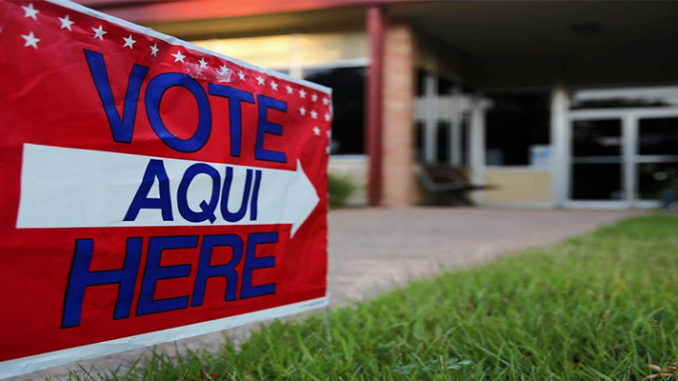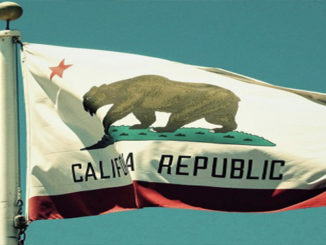
By Alex Gonzalez
 Everyone seems to be making it sound as though Ohio is the most important state. But let me tell you that without the Latino vote in Colorado, Nevada and Florida, neither Romney nor Obama can win the White House, even if they get Ohio. So it is my job to tell you that the uncommitted Latino vote in swing states is the most important, even if it is being underestimated right now. Therefore, this article is an unashamed claim about the importance of the Latino vote in these three swing states. Moreover, because of such importance, this is the time for Latino voters to demand equal attention from both candidates on issues that matter to them because they hold the balance of power to the W.H.
Everyone seems to be making it sound as though Ohio is the most important state. But let me tell you that without the Latino vote in Colorado, Nevada and Florida, neither Romney nor Obama can win the White House, even if they get Ohio. So it is my job to tell you that the uncommitted Latino vote in swing states is the most important, even if it is being underestimated right now. Therefore, this article is an unashamed claim about the importance of the Latino vote in these three swing states. Moreover, because of such importance, this is the time for Latino voters to demand equal attention from both candidates on issues that matter to them because they hold the balance of power to the W.H.
Few months ago Mitt Romney made of show out of his trip to Israel just to get the attention of 600,000 potential Jewish voters in Florida. But traditionally Jews vote only about 25% Republican. Also, the combined vote of Latino voters in Florida easily surpasses those few Jewish voters in the state.
The Latino vote in these three swing states is relatively small compared to other states like Texas and California with a larger Latino voting blocs, but what makes the Latino vote more relevant in these states is the fact that Latinos in the past have not been committed completely to one party, and they vote depending issues important within the state they reside. Colorado and Nevada are two states that John McCain lost in 2008 but that George W. Bush won twice; and, Latino voters often split their vote deepening on the candidate.
 In 2010, the Latino vote in Colorado was 11% of the total share of voters, now it is 13%. In 2010, 78% of Latino voters in the state voted as Democrats. With a close race for the U.S. senate and for Governor in Colorado, the 13% of the Latinos voted overwhelmingly against Tom Tancredo was decisive; a vote against Tancredo gave the victory to a Democrat Governor and U.S. Senator with less than 5% margin. Similarly in 2008, in Colorado Obama got 53% in 2008 but McCain got 38% of the Latino vote, up from 31% in 2004. As a result, since 2004, the Latino vote in Colorado have shown to be a swing vote that will vote for the candidate who better appeal to their issues, or against who they perceive too anti-Latino. And the 5% vote margin in swing in the state makes the Latino vote more influential.
In 2010, the Latino vote in Colorado was 11% of the total share of voters, now it is 13%. In 2010, 78% of Latino voters in the state voted as Democrats. With a close race for the U.S. senate and for Governor in Colorado, the 13% of the Latinos voted overwhelmingly against Tom Tancredo was decisive; a vote against Tancredo gave the victory to a Democrat Governor and U.S. Senator with less than 5% margin. Similarly in 2008, in Colorado Obama got 53% in 2008 but McCain got 38% of the Latino vote, up from 31% in 2004. As a result, since 2004, the Latino vote in Colorado have shown to be a swing vote that will vote for the candidate who better appeal to their issues, or against who they perceive too anti-Latino. And the 5% vote margin in swing in the state makes the Latino vote more influential.
In Florida According to the Florida Department of State Division of Elections, 1,551,000 Latinos were registered to vote statewide as of mid-July 2012. Overall, Latinos make up 13.5% of the state’s more than 11.4 million active registered voters. Among Latino registered voters, 463,000 are registered as Republicans, making up 11.2% of all Republican registered voters. And 592,000 Latino registered voters are registered as Democrats, representing 12.9% of all Democratic registered voters. And in 2010, 55 % of Latinos voted Republican, including the Cuban-American vote. However, among the non-Cuban Hispanics only 45% voted for Republican. But the 55% Hispanic Republican vote in 2010 can be attributed to Sen. Rubio’s Cubans roots in race–straight-party vote. Therefore, if Latinos make up 13.5 of state’s registered voter but only 40% of those Latinos voters are Cuban Republican voters, with no Cuban in the Republican ticket as in 2010, Older Cuban–who traditionally vote Republicans and in larger numbers—may not have the edge to hold the majority without bringing-in other Latino groups voters. Consequently, in Florida, Romney needs to accommodate the issues important to non-Cubans voters to get the 29 Electoral Votes.
In 2004, Bush won Nevada. But in 2008, Obama won Nevada with lees than 5% point over McCain. In 2010, Latinos in Nevada were 15% of the states’ registered voters. But Latinos turnout was 16% of the total state vote. As a result, Republican Brian Sandoval got 34% of the Latino vote, but Tea Partier Sharon Angle receives only 8% of the Latino vote. So what the election of 2010 showed is that Latino do not vote in lockstep for Party, and can split their vote, even in Republican ballot.
More importantly, Latinos can use their vote to punish candidates when they perceive a candidate’s view to anti-Latino, as it was the case with Tom Tancredo in Colorado and Sharon Angle in Nevada in 2010. Consequently, the Latino electorate in Nevada and Colorado, tough small, can shift the balance of power.
Even in Texas, with its strong red mantra, the balance of power favoring Republicans depended on getting at least 30% of the Latinos vote. For example, the total states’ registered voters are about 13 million. The traditional turnout for a presidential election in Texas is 57%, or about 8,000,000.
![]() 2.5 million Of Latinos in Texas are registered to vote. And according to NALEO, 1,978,000 Latinos will vote in these 2012 elections in Texas; this is an increase of 17 % from 2008 in Texas alone. Therefore, Republicans in Texas need minimum of 30% Latino vote to keep a majority since in 2008 McCain won Texas with only 55% of the total state vote. If the 80% of the 1,987,000 of Latino were to vote Democrat, Texas could turn blue in one election. And even if Nalco’s prediction is off by, let’s say 300,000 votes, with 1,700,000 Latino voters will comprise about 20 to 25 percent of the total states’ voters since Texas has traditionally only a 57% turnout.
2.5 million Of Latinos in Texas are registered to vote. And according to NALEO, 1,978,000 Latinos will vote in these 2012 elections in Texas; this is an increase of 17 % from 2008 in Texas alone. Therefore, Republicans in Texas need minimum of 30% Latino vote to keep a majority since in 2008 McCain won Texas with only 55% of the total state vote. If the 80% of the 1,987,000 of Latino were to vote Democrat, Texas could turn blue in one election. And even if Nalco’s prediction is off by, let’s say 300,000 votes, with 1,700,000 Latino voters will comprise about 20 to 25 percent of the total states’ voters since Texas has traditionally only a 57% turnout.
Polls show Obama and Mitt Romney deadlocked in Colorado, and Obama narrowly ahead in Nevada, which went to the president by a 12-point margin in the last election. True, Colorado and Nevada account for fewer electoral votes combined than Ohio, but Florida easily surpasses Ohio. In addition, the Hispanic populations in Colorado and Nevada—two states that John McCain lost in 2008 but that George W. Bush won twice—have consistently voted on issues important to them and against candidate they perceive anti-Latino (Tancredo, Angle) than more than economic.
Also, there are senatorial races in Texas, New Mexico, Arizona, Florida and Nevada; so Latino voters too will have a say in arrangement of Unites States Senate, as they did in 2010.
So the time is ripe for Latinos to demand a bit more attention from candidates and not only empty rhetorical speeches. Three small but very crucial blocs of Latino voters in Colorado, Nevada and Florida may hold the key to the White House; so a demand for little more clarity on the issues such education, health care, Jobs, and immigration is nothing compared to honor of becoming the President of the United States of America.
I leave it to the Republican Nation Jewish Coalition to claim that few Jewish voters are the “most important vote” this election. I leave to the Faith and Freedom Coalition to claim that Evangelicals are the “most important vote”, too. But for us, Latino voters, we are the most important vote in Colorado, Florida and Nevada.
Alex Gonzalez is a political Analyst and Political Director for Latinos Ready To Vote. Comments to [email protected] or @AlexGonzTXCA




